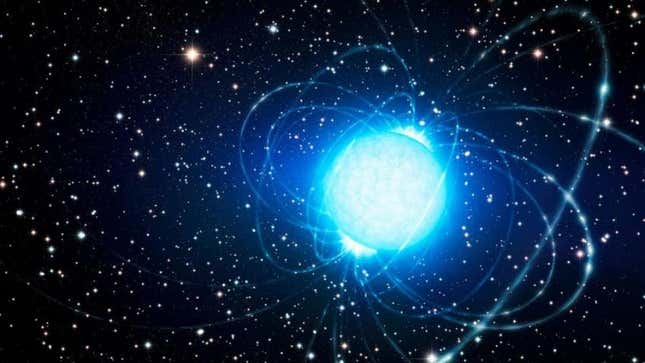
A team of astrophysicists recently used new models of neutron stars to map the mountains—tiny raised areas—on the stars’ otherwise perfectly spherical structures. They found that the greatest deviations were still extraordinarily small due to the intense gravitational pull, clocking in at less than a millimeter tall.
Neutron stars are the dead cores of once-huge stars that collapsed in on themselves. They are the densest objects in the Universe aside from black holes. They’re called neutron stars because their gravity is so intense that the electrons in their atoms collapse into the protons, forming neutrons. They’re so compact that they pack a mass greater than that of our Sun into a sphere no wider than a city.
The team’s assessment of the “mountains” on these neutron stars comes in two papers currently hosted on the pre-print server arXiv; together, the papers assess how big these mountains can be. The team’s results are being presented today at Royal Astronomical Society’s National Astronomy Meeting.
“For the past two decades, there has been much interest in understanding how large these mountains can be before the crust of the neutron star breaks, and the mountain can no longer be supported,” said Fabian Gittins, an astrophysicist at the University of Southampton and lead author of the two papers, in a Royal Astronomical Society press release.
Previous work indicated that neutron star mountains could be a few centimeters tall—many times larger than what the recent team has estimated. The earlier calculations assumed that the neutron star would sustain such large bumps on its surface if it were strained to its limits, like Atlas holding up the world. But the recent modeling found that the earlier calculations are unrealistic behavior to expect from a neutron star.

“For the past two decades, there has been much interest in understanding how large these mountains can be before the crust of the neutron star breaks, and the mountain can no longer be supported,” Gittins explains in the release.
Past work has suggested that neutron stars can sustain deviations from a perfect sphere of up to a few parts in 1 million, implying the mountains could be as large as a few centimeters. These calculations assumed the neutron star was strained in such a way that the crust was close to breaking at every point. However, the new models indicate that such conditions are unlikely.
“A neutron star has a fluid core, and elastic crust and on top of that a thin fluid ocean. Each region is complicated, but let’s forget about the fine print,” Nils Andersson, a co-author on both papers and an astrophysicist at the University of Southampton, said in an email. “What we have done is build models that join these different regions together in the correct way. This allows us to say when and where the elastic crust first breaks. Previous models have assumed that the strain is maximal at all points at the same time and this leads to (we think) estimated mountains that are a bit too large.”
These crustal yields would mean that the energy from the mountain would be released into a larger area of the star, Andersson said. While based on computer models, the crust shifts would “not be dramatic enough to make the star collapse, though, because the crust region involves fairly low density matter,” Andersson said.
Intriguing questions remain. There’s a possibility, Andersson said, that after a first crustal break, larger mountains than those the team modeled could occur due to the flow of matter across the star’s surface. But even those mountains would be much smaller than a molehill, compressed by the immense gravity of the stars.
More: Astrophysicists Detect Black Holes and Neutron Stars Merging, This Time for Certain